
by D. J. Green | Nov 6, 2017 | Ground Work

Two granodiorite cobbles sit on my desk. This shouldn’t surprise you, seems my desk has almost as many rocks as papers on it. These cobbles are similar in size and shape and rock type. Each is spheroidal, shaped on the shores of British Columbia in an area where granodiorite is a common rock type in the coastal mountain ranges.

Rebecca Spit, Quadra Island, British Columbia with the coastal mountains on the horizon.
Granodiorite is an intrusive igneous rock, somewhat similar to granite, though it contains more plagioclase feldspar (which is off-white) than orthoclase feldspar (which tends to pink). It’s also composed of quartz, and darker minerals like biotite (black mica) and hornblende (an amphibolite mineral with elongated black crystals). It most often looks like a speckled, salt-and-pepper rock, as its predominant minerals are black and white. It’s hard, as rocks go, and these cobbles have endured thousands of tides rolling in and out, sculpting them.
 But they’re different from each other. One, like most of the cobbles along this rocky shore, is smooth, its crystal faces polished off. The other, though perfect in shape, is rough to the touch. Its crystals haven’t been planed off, and their angular faces catch the light. I found it in a sheltered tide pool, and imagine it gently rocked to and fro, shaped by the ocean, but not honed.
But they’re different from each other. One, like most of the cobbles along this rocky shore, is smooth, its crystal faces polished off. The other, though perfect in shape, is rough to the touch. Its crystals haven’t been planed off, and their angular faces catch the light. I found it in a sheltered tide pool, and imagine it gently rocked to and fro, shaped by the ocean, but not honed.

There’s something exquisite about its roughness, the texture intrigues. It makes me think about the time and the forces that shape us – rocks and people – and it reminds me that rough can be beautiful too.
What shaped you?

by D. J. Green | Sep 17, 2017 | Venus & Mars Go Sailing
To skipper a boat is to take on a role that’s well defined. To skipper – to command, to be in charge of, to run, and to lead. But to command or be in charge of what? Certainly not the wind and the sea.

Adjusting the sail to the wind.
It is to command the boat, and her crew. It means that the decisions to be made are the skipper’s. Decisions as small as heaving to for a lunch break during a daysail and as big as taking the boat across an ocean. Most of the decisions are somewhere in between on that sliding scale of importance – to go or not to go on any given day (given the conditions), when to replace the battery bank (assuming they haven’t simply gone dead), how much sail to put up (given the conditions and the forecast and the experience level of the crew), to go through a tide gate a little early or to wait (given a reading of the water), when to change the raw water impeller (assuming it hasn’t failed), and how much anchor rode to deploy (given the depth of the anchorage, the wind, the forecast, and how many other boats are there and how close they are).
The day is filled with one decision after another, just like all our days are, but intensified.
These decisions can mean the difference between dragging anchor or not, the engine running or not, the crew getting seasick or not, and even, in the extreme, life and death. Being in command doesn’t mean not listening to others’ input, but it does mean that the final decision is the skipper’s. Period. To skipper is to be responsible – for the safety of the ship, and more importantly, her crew.

Plumbing project below decks.
I was first mate for eight years, with a skipper who was an excellent sailor and had studied Kagán’s systems until he could fix the plumbing standing on his head (which, if you have a boat you know, is often a necessity in the small spaces the systems are crammed into, but that’s another story…). I admit that as I gained experience there were times I questioned my skipper’s judgement, sometimes silently and sometimes not. My late partner, Jerry, despite being an accomplished skipper, sometimes seemed indecisive to me. And I didn’t understand why. I had complete confidence in him and I wondered why he didn’t.
I UNDERSTAND NOW.
Most days the consequences of a skipper’s decisions aren’t big. But not all days are most days. Big things can, and do, go wrong, even on small boats. What looks like indecision may be the skipper waiting for one more piece of information that will make her feel sure about, or at least more confident, in whatever decision is at hand.
Last sailing season, I made a series of decisions, and mistakes, leaving a dock in heavy wind. It resulted in an injury to my first mate. It’s too close, the mental images too vivid, to write about (I will just say that, thankfully, my injured crew has recovered). In a way that I never did before, I now understand the consequences of my decisions. The decision to slip the dock lines that day, because there was a check-out time at the marina, despite boats having been moved into positions that made Kagán’s departure precarious, was my first mistake. I have played the scene over and over in my mind.
I’ve tried to learn that day’s lessons (which are many) and let go of blaming myself (which lingers).
In some posts, I’ve eschewed metaphorical leaps, but here I won’t. The leap from commanding Kagán to commanding my life. Decisions must be made – to not make a decision is to make a decision, because something will happen either way. I’d rather take command, make my decisions, and undoubtably my mistakes, in life, as I have on Kagán. I choose to live with those consequences, and to learn the lessons.
Living one of those lessons today, as I’m posting this while we sit out a Southeaster. We’ll head north to Desolation Sound after it blows through.
WHAT DECISIONS, OR MISTAKES, HAVE BEEN YOUR GREATEST TEACHERS?

by D. J. Green | Aug 10, 2017 | Ground Work
I walked into my father’s room. He sat in his blue easy chair, wearing a maroon turtleneck and gray sweat pants. His hair and beard were freshly trimmed. He looked dapper, for Dad. And he was awake. A good day for a visit. But he seemed to be fussing with something in his lap. I got closer to see what it was and found him pulling at the skin on his hands.
“Help me get these off!”
“What? Those are your hands.”
He yanked at the skin on each finger.
“I’ve got to get these gloves off!”
“That’s your skin!” I tried to get him to stop pulling on it, but he brushed my hands away.
“Boxing gloves,” he said. “I need to get them off now.”
My father was 94 years old when this happened. As the years had slipped away, he slipped away with them. Our family transitioned month-by-month and year-by-year from a time when he joked about “incipient Alzheimer’s” to living in the grip of the advanced stages of the decidedly-not-incipient disease.
“Dad, please don’t pull on your skin like that. You’re going to hurt yourself.”
His caregiver for the day came in. I was relieved to see his hands come to rest, when his attention shifted to her. He looked from her to me, back and forth.

Deb’s Dad ready for the fight.
Then he turned to me, “Can you beat her?”
“What?”
“Boxing? Do you think you can beat her?”
I had no recollection of how to address boxing questions from the Savvy Caregiver’s Class given by the Alzheimer’s Association, but I decided to play along.
“She’s a lot younger than me. And bigger.”
“But you’re tough. And fast.”
“Okay. I bet I could beat her.”
Dad was not much of a talker, except for the odd day when who knew what made the tangles in his brain twist in a way that rendered him downright animated. Like that day.
He waved his hands at us. “Well? Go ahead! Box!”
She and I exchanged glances. I stood up. She raised her fists and I raised mine. I did my best float-like-a-butterfly Muhammad Ali-style dance steps. We threw fake punches.
 “Go get ‘er, Deb!” Dad cheered, laughing. “Get her!”
“Go get ‘er, Deb!” Dad cheered, laughing. “Get her!”
We sparred. Dad was firmly in my corner. He chuckled and egged me on.
Most days I saw recognition in Dad’s eyes, felt affection in the hand he reached out to me when I arrived. Some days he said my name. That day he cheered for “Deb.” Later, I would write that down in my calendar. I don’t know why it seemed important to know what day would be the last that he knew my name, but it did.
I was as close to my father as he would let anyone be, aside from my mother. He instilled the love of science in me and inspired me to become a geologist. I missed talking with him about geological work or him commenting on articles he’d read in Scientific American. I missed the Life Master in Duplicate Bridge. I missed the reader and movie goer. I missed the passionate traveler. I missed my father, though he was still there, sort of.
I went for a flurry of air jabs and my opponent succumbed.
“She beat me!” she said, “I better go rest up. I need to get your lunch soon, Sid.”
“She beat you?”
“She sure did.”
He smiled up at me.
Fists raised in triumph, I smiled back.
My father, by the way, had never been a boxing fan. Who knows why it was on his mind that day. Perhaps a research neurologist knows, someone who will help spare families the pain of Alzheimer’s in the future.
Maybe my father was pulling off those gloves because he was tired of fighting?
 But most days, we just sat. Some days he slept through my visit. Some days he roused and gave me a smile. He often held the newspaper, his reading glasses propped on his nose, and I wondered what he saw in the words and pictures before him. Sometimes I held his hand and sometimes he held mine back. One day in March of this year, when I asked how he was, he said, “I’m happy to see you.” My heart sang. His face lit up when I walked into his room and he waved when I left.
But most days, we just sat. Some days he slept through my visit. Some days he roused and gave me a smile. He often held the newspaper, his reading glasses propped on his nose, and I wondered what he saw in the words and pictures before him. Sometimes I held his hand and sometimes he held mine back. One day in March of this year, when I asked how he was, he said, “I’m happy to see you.” My heart sang. His face lit up when I walked into his room and he waved when I left.
So, I sat with my father, as long as he was here to sit with. At nearly 96 years old, he passed away peacefully in June. One of many things I’m grateful for – he knew me until the end.
Save

by D. J. Green | Jun 2, 2017 | Ground Work
 This rock is very old, though new to me. I recently picked it up on one of my many desert walks. Having rained the day before, it was rinsed clean and sparkled in the sun. Its glistening was irresistible to me – like a bottle cap to a raven or a tennis ball to a Labrador Retriever. It’s been sitting on my desk ever since. Its shine shifts with changing light. Schist does that. I pick it up, tilt it this way and that, and let the light play over it.
This rock is very old, though new to me. I recently picked it up on one of my many desert walks. Having rained the day before, it was rinsed clean and sparkled in the sun. Its glistening was irresistible to me – like a bottle cap to a raven or a tennis ball to a Labrador Retriever. It’s been sitting on my desk ever since. Its shine shifts with changing light. Schist does that. I pick it up, tilt it this way and that, and let the light play over it.
Schist is a metamorphic rock.
That means it’s been recrystallized by heat and pressure, fundamentally changed from the rock it was to the rock it is. [I can see the metaphor in this – I’ve also fundamentally changed, under pressure, from who I was to who I am. But it’s really more fun to talk about rocks.]
This stone started out sedimentary, probably a shale deposit, composed mainly of clay minerals. It would have been deposited in a low energy aqueous environment; low energy meaning still or very slow moving water, otherwise the tiny clay particles would have stayed in suspension. Then it would have been buried. And then lithified, turned from sediment to stone.
Later, it was subjected to heat and pressure. In the case of schist, medium grade metamorphism, the middle range of temperatures and pressures rocks can be subjected to. During metamorphism, the clays would have recrystallized to platy minerals (like micas and graphite) and elongated minerals (like hornblende), both of which I see in this rock.
The compression it underwent aligned the minerals perpendicular to the direction of stress. That would tell me something about the tectonic history of the area if I found it in place, which I did not. I found it thousands of feet below its outcrop and more than a billion years after it first formed, since the metamorphic rocks here are associated with the Precambrian Sandia Granite. The intrusion of the granite body was the event that metamorphosed the surrounding sediments, now meta-sediments, like this schist.
And so the cycle continues – deposition, lithification, metamorphism, erosion, and deposition – this rock is a sediment again. It made its way down slope and came to rest beside the trail I walk. [Again, I can see all this metaphorically. But sometimes a beautiful thing, like a stone shimmering in the sun, is so perfect it can be just that. It can be my picture, the memory I carry home, from a walk in the desert.]
.
Tell me – What catches your eye? What do you carry home?

by D. J. Green | May 12, 2017 | Ground Work
 I brought my camera when I walked in the desert today. A blog needs images, right? Right. But not this morning. It rained yesterday, and the prickly pear fronds are swollen with the storm’s bounty. But it’s subtle, and the pictures just look like prickly pear, not subtly swollen prickly pear. Droplets of water still cling to a yucca’s waxy blooms. The chollas’ spindly, spiny branches also seem fuller. And their buds, with just the tips of what-will-be fuschia blooms peeking out, hint at the flowers that will come with the next rain, but they aren’t very photogenic.
I brought my camera when I walked in the desert today. A blog needs images, right? Right. But not this morning. It rained yesterday, and the prickly pear fronds are swollen with the storm’s bounty. But it’s subtle, and the pictures just look like prickly pear, not subtly swollen prickly pear. Droplets of water still cling to a yucca’s waxy blooms. The chollas’ spindly, spiny branches also seem fuller. And their buds, with just the tips of what-will-be fuschia blooms peeking out, hint at the flowers that will come with the next rain, but they aren’t very photogenic.
When I’m thinking of composing pictures, I lose the wonder of a tiny purple flower in an effort to make my unsophisticated camera focus on something so small. I forget to listen to the meadowlark’s song, hearing instead the whir of the camera’s auto-focus honing in on a quarter-inch of color. The flower’s five tiny petals are lavender deepening in hue toward the middle of the bloom with lacy green leaves below, but its image is just a blur.
A pair of ravens soar overhead, screeching. Are they scolding me for not paying attention? I stop. The camera whirs one last time, when I turn it off. I zip it into my pocket and walk on.
 With the camera tucked away, I delight in the dogs’ gaits, instead of feeling frustrated that they won’t pose suitably (because they do look so very picturesque, until I try to get them to sit still for a picture, that is).
With the camera tucked away, I delight in the dogs’ gaits, instead of feeling frustrated that they won’t pose suitably (because they do look so very picturesque, until I try to get them to sit still for a picture, that is).
Now I see yellow and white and orange flowers too. I only know the white ones by name, desert primroses. They’re so delicate, they won’t last long. I kneel and stroke a satiny petal. I notice that there are new shoots of the desert grasses that some years don’t come at all. But yesterday’s rain invited the new growth, and today’s sun coaxed it out.
The rain settled the desert dust and a newly rinsed piece of schist catches the sun’s rays, and my eye. Its silver warmth feels good in my hand. I carry it home. It will serve as my picture from today’s walk. Sitting on my desk, yet another of my myriad rocky paperweights, it will remind me of the lingering smell of the rain, the buds and blooms, the fresh grassy shoots, the swooping ravens, and the meadowlark perched atop a juniper.
my desk, yet another of my myriad rocky paperweights, it will remind me of the lingering smell of the rain, the buds and blooms, the fresh grassy shoots, the swooping ravens, and the meadowlark perched atop a juniper.
P.S. – I confess that I went back out and did a picture-taking walk. Hope you enjoy both the words and the photos.

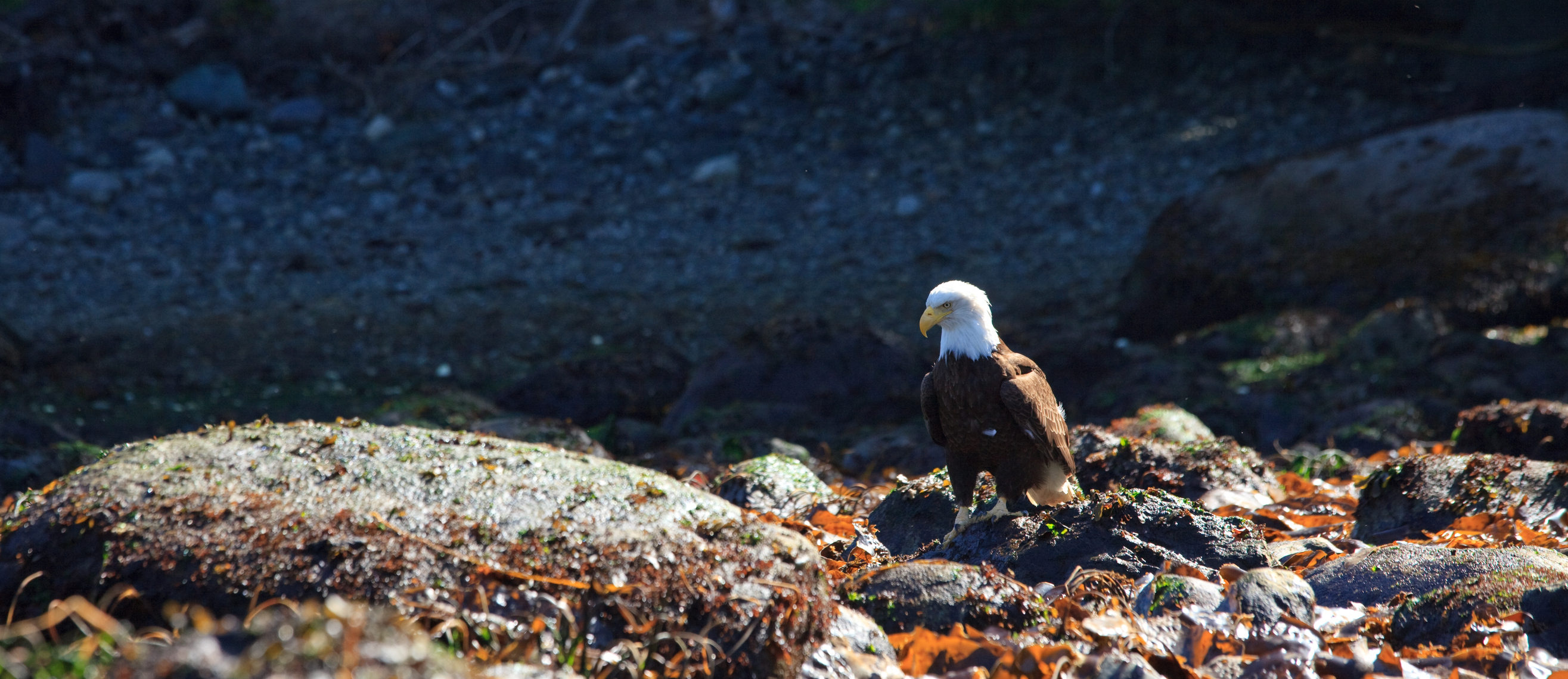
 But they’re different from each other. One, like most of the cobbles along this rocky shore, is smooth, its crystal faces polished off. The other, though perfect in shape, is rough to the touch. Its crystals haven’t been planed off, and their angular faces catch the light. I found it in a sheltered tide pool, and imagine it gently rocked to and fro, shaped by the ocean, but not honed.
But they’re different from each other. One, like most of the cobbles along this rocky shore, is smooth, its crystal faces polished off. The other, though perfect in shape, is rough to the touch. Its crystals haven’t been planed off, and their angular faces catch the light. I found it in a sheltered tide pool, and imagine it gently rocked to and fro, shaped by the ocean, but not honed.

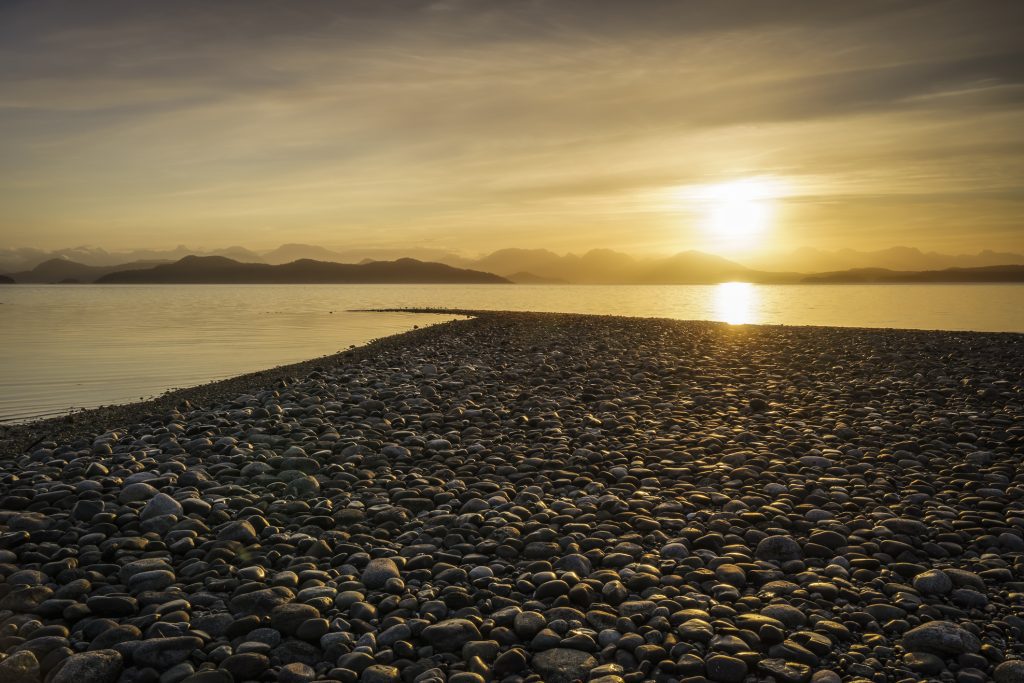
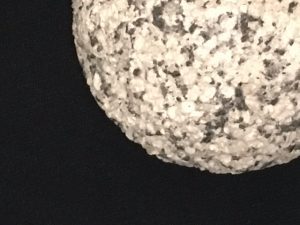
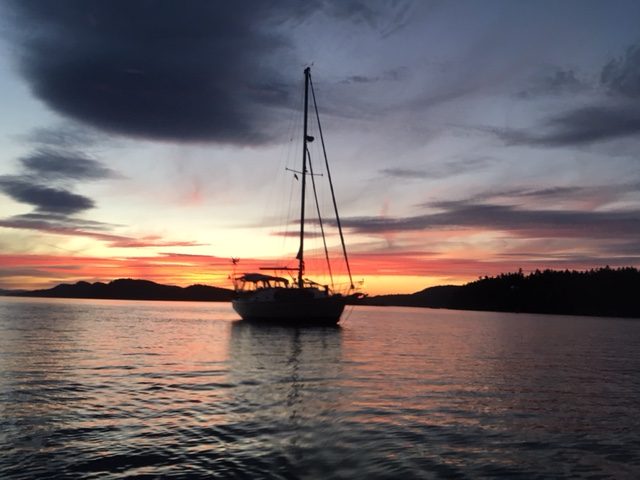
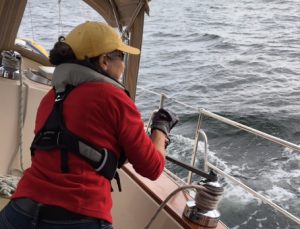


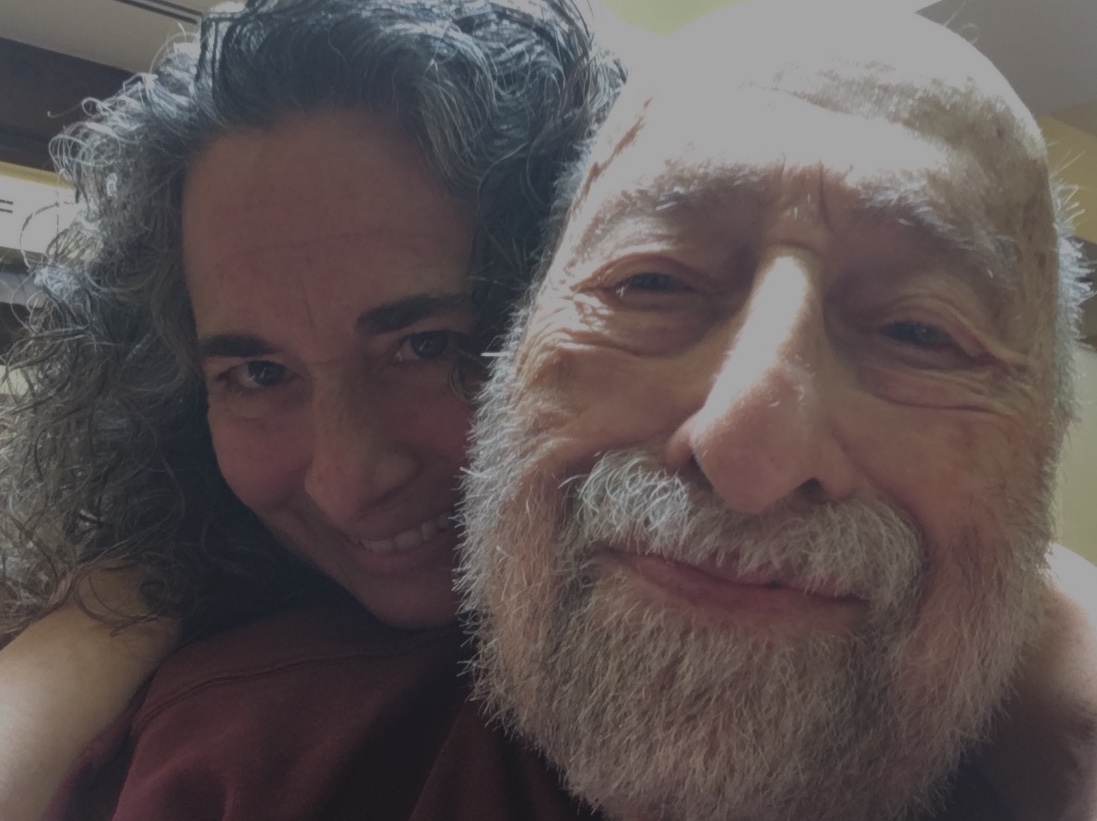
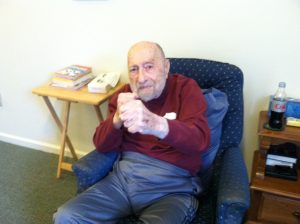
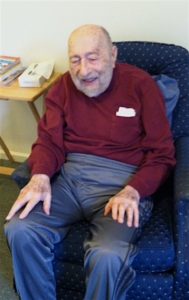
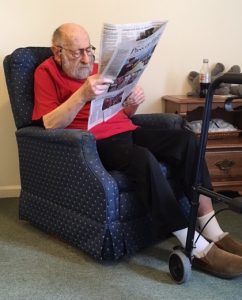
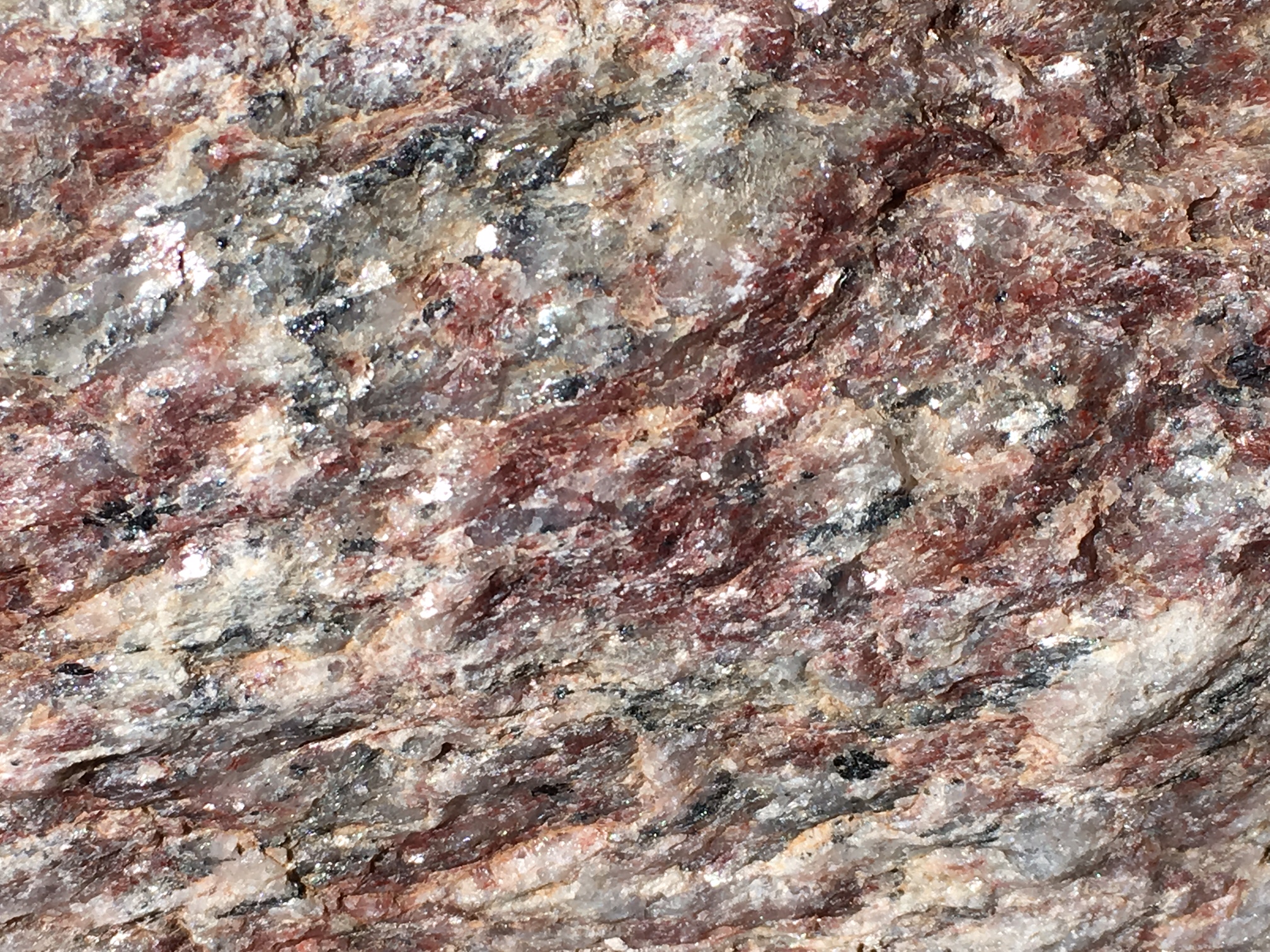
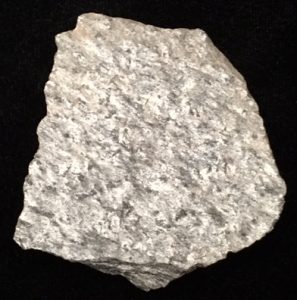 This rock is very old, though new to me. I recently picked it up on one of my many desert walks. Having rained the day before, it was rinsed clean and sparkled in the sun. Its glistening was irresistible to me – like a bottle cap to a raven or a tennis ball to a Labrador Retriever. It’s been sitting on my desk ever since. Its shine shifts with changing light. Schist does that. I pick it up, tilt it this way and that, and let the light play over it.
This rock is very old, though new to me. I recently picked it up on one of my many desert walks. Having rained the day before, it was rinsed clean and sparkled in the sun. Its glistening was irresistible to me – like a bottle cap to a raven or a tennis ball to a Labrador Retriever. It’s been sitting on my desk ever since. Its shine shifts with changing light. Schist does that. I pick it up, tilt it this way and that, and let the light play over it.
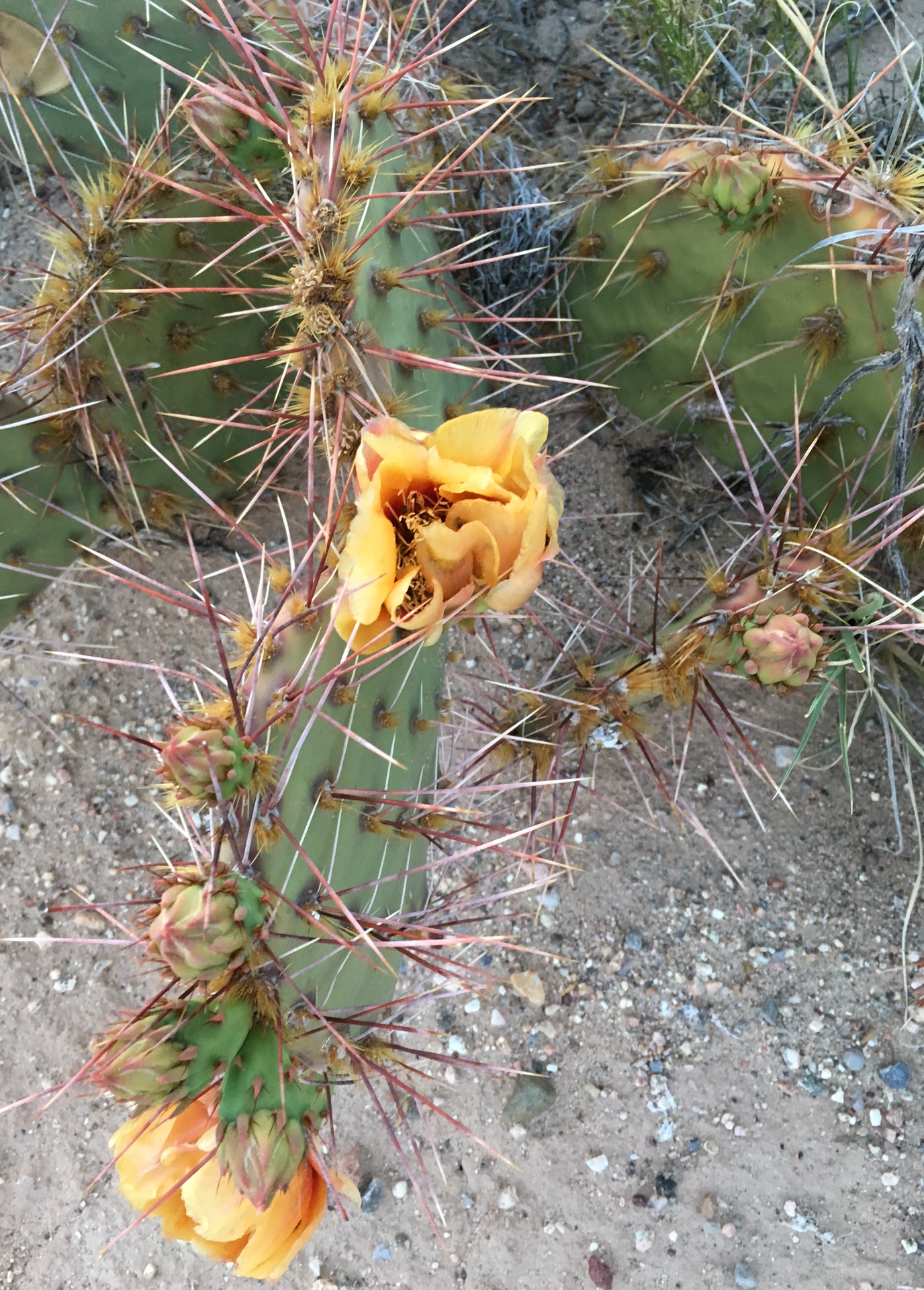

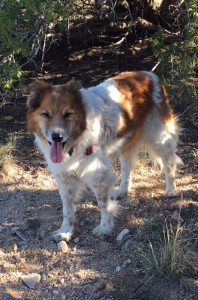
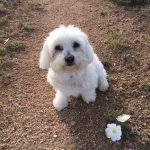
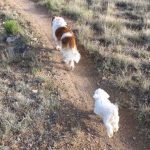

Recent Comments